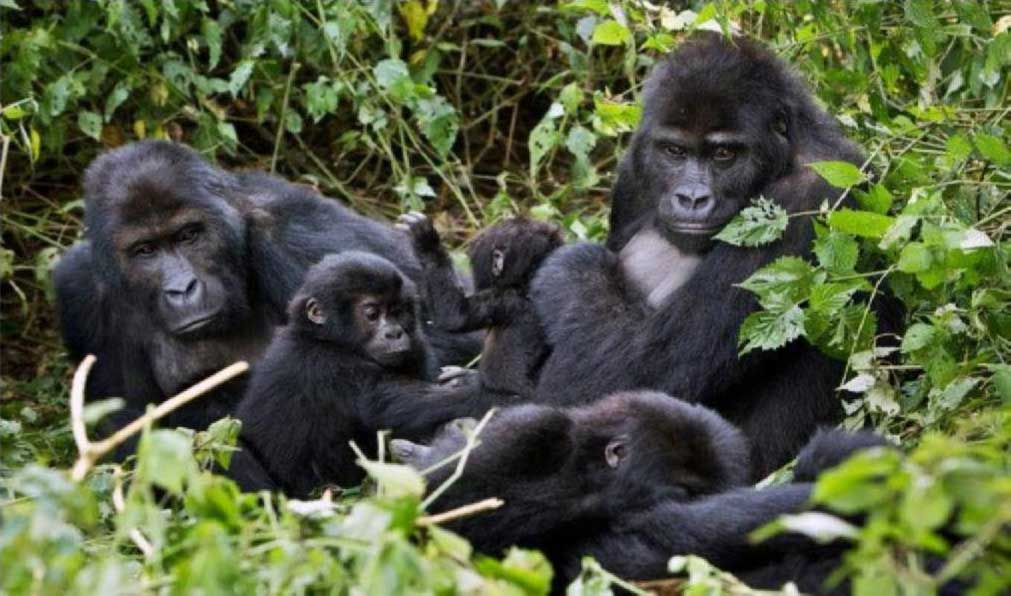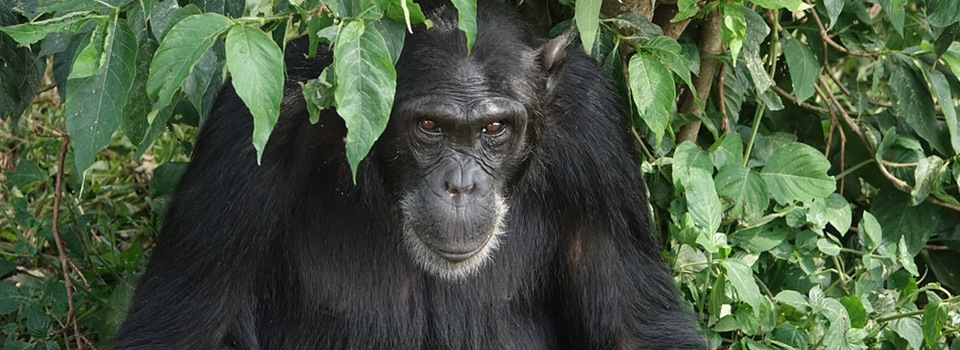The Mysterious Beauty of the Great Apes!
The gorilla is the largest of the great apes family and can be divided into four subspecies.
Western lowland Gorilla (gorilla gorilla gorilla), these type of gorilla are mostly seen in zoos. As of 2008, there were an estimated 125,000 western lowland gorillas living in Africa.

Cross River Gorilla ( gorilla gorilla cliehli), the rarest of all types with only 300 left in the wild. They are found in the border area between Cameroon and Nigeria.
Eastern lowland Gorilla (gorilla gorilla graueri), about 5000 live in the wild. They can be found in the eastern Congolese rainforest.
Mountain Gorilla (gorilla gorilla beringei), the most endangered of all with only about 790 remaining. They are living in the afro montane forests in north west Rwanda, South west Uganda and Eastern DRC.
All types of gorilla are considered critically endangered but the mountain gorilla is the most endangered specie of the great apes family. And because they can’t survive in captivity, you will never see a mountain gorilla in the zoo.
The mountain gorillas live in the almost impenetrable parts of the tropical forests in Central Africa. The entire world’s population is spread out over only two different places. Approximately half of individuals inhabit the slopes of the Virunga Volcanoes, stretching out from the border area in Congo to Rwanda. The other half are found in Bwindi National Park in Uganda, covering an area of about 330 square kms.
How do Gorillas live?
Gorillas live in groups consisting of 6-7 individuals and up to 35 members. Usually, there is one leading male accompanied by several females with their young ones.
When a baby gorilla is born, it weighs on average 3-4 pounds (1.4-1.8 kgs) which is about half the weight of a new born human being (baby). However, this baby develops twice as fast within 40 weeks it can walk and reaching 3 years, it slowly becomes independent. At 6 years they are about 1.20 meters tall and weigh almost 70 kg. At this age, the female gorilla matures though they continue gaining weight for the next 4 years. Males on the other hand, don’t reach maturity till they are 10 years old. When their black back starts turning into grey, it is time for them to leave the parental group. They wander alone or join other males for some time before attracting females who will join them. In this way, they form their own family.
Gorillas reproduce slowly, there gestation period is approximately 8.5 months and gorilla mothers give birth to a baby once every 4 years. Unfortunately, 30% do not survive their first year because of diseases and accidents. Another situation that causes death among the baby gorillas is when their father dies and another silver back takes over. This new male often kills all the babies of his predecessor, securing his own genes in posterity.
Do Gorillas and people share something in common?
Although the chimpanzee is the closest relative to people on the planet, the gorilla resembles human beings in even more aspects. Their hands and feet are like those of human beings, they spend more time on the ground and consequently gorillas are better able to walk. In fact, they share “98% of human DNA.”
Gorillas have high social qualities and relationships within the family are very important, they express their feelings varying from loving and hating to shame and jealousy, by at least 20 distinct vocalizations all with a different meaning. Besides, beating on the chest or on the ground is a common form of communication as well. It is mainly the silverback who does this, in order to show his power and to intimidate others, however ggression is rarely seen within gorilla families. Despite their impressive looks, they are extremely gentle and peace loving. In case of danger, they stand up for each other and defend the weak ones. Serious fights might only take place when two leaders of different groups meet each other.
Hierarchy is clear and important within the gorilla family, the dominant silver back enjoys the highest rank and the adult females rule over younger ones. Like with other species, the animal world, gorilla males achieve the high ranking because of their size. Male mountain gorillas can weigh up to 200 kgs and can reach 1.70 meters when they are standing up right. Besides the strength, they also have to prove their experience and abilities. It is the duty of the silver back to protect its family from danger and intruders. It is not difficult to figure out where the main “Silverback comes from. Around the age of 12 years they develop light grey hair on their back, giving them a “Silverback.”
How a day is spent in the life of a gorilla?
An ordinary day in the life of a mountain gorilla starts at sunrise, around 6 am. They wake up and begin looking for food which covers a great part of the morning. In general, a gorilla spends about 30% of the day with feeding, 30% with travelling and 40% with resting. In contrast to many primates, the gorilla lives mainly on the ground. They travel not more than a kilometer per day within their home range of about 20 sq km.
Gorillas are vegetarians, though occasionally they may eat ants and shrubs and some fruits. During certain months of the year, bamboo shoots supply a major part in their diet as well. A male adult can even eat up to 20kgs per day. Because the gorillas receive a large quantity of water from its diet, they have to drink.
The afternoons are mainly spent with resting and playing. This last activity is very important in the social life, especially for young gorillas, as it determines their integration into the group. They hug each other, bite, hit or wrestle till one is pulled down on the ground.
At the end of the day, just before dark, the great apes start constructing a nest where they will spend their night. Every single gorilla has its own nest, except for the infants who sleep next to their mothers. Nests are built on the ground or in the trees and are carefully constructed by branches of bushes and other plants.
Protect the Gorilla!
The existence of the gorilla was discovered in 1902 by a German explorer. Nearly 60 years later, the American scientist George Schaller was the first one to study the Gorillas in the Virunga Volcanoes and Bwindi. Later, Diana Fossey continued his research and she became famous for her movie. “Gorillas in the Mist.” She worked with gorillas in Rwanda from 1967 till 1985 and thanks to her dedication, the world began to learn about the mysterious beauty of these apes. To this day, the Karisoke Research Centre in Rwanda can still be visited.
Even before the research started, an estimated number of 450 mountain gorillas were living in the Virungas. Only 20 years later, the population was decreased to 250 individuals. Although the gorillas have just a few enemies, the most dangerous one is the human being where by their habitats were destroyed through deforestation, they suffered from wars, diseases were transferred and they were commonly hunted for meat or just as a trophy.
The number raised again, thanks to the conservation efforts of Diana Fossey together with the Uganda Wildlife Authority.
Try Our Top Safaris

